Jordan Travel Guide
Jordan Travel Guide – plan your trip to Jordan with our travel guide including how to get around, things to see and do, what and where to eat and many more.
Jordan is a beautiful country situated in the heart of the Middle East, known for its ancient history, unique culture, and breathtaking landscapes. The country has a diverse range of attractions for tourists to explore, from the ancient ruins of Petra to the bustling markets of Amman. Jordan is also home to the Dead Sea, one of the world’s saltiest bodies of water, which is a popular destination for spa treatments and relaxation.
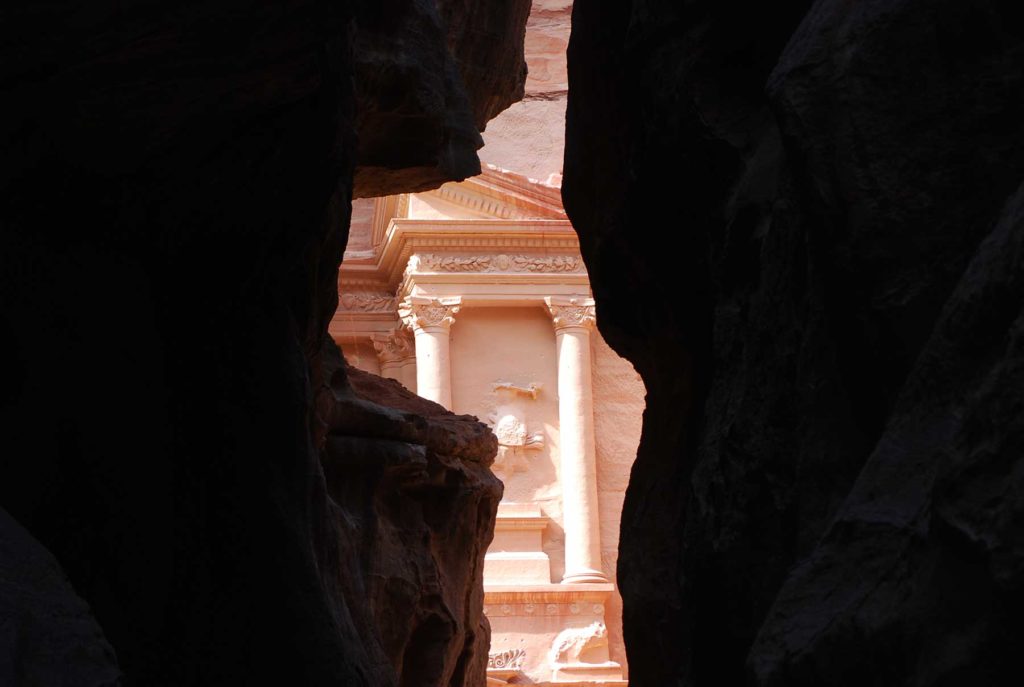
One of the top attractions in Jordan is Petra, an ancient city carved into the red rock mountains over 2,000 years ago by the Nabateans. This UNESCO World Heritage Site is one of the Seven Wonders of the World and attracts millions of visitors each year. Visitors can explore the ancient temples, tombs, and amphitheaters that make up this unique city and learn about its fascinating history.
Another must-see destination in Jordan is the Wadi Rum Desert, a vast and stunning landscape of sandstone mountains and red sand dunes. This desert is home to the nomadic Bedouin people, who offer visitors a glimpse into their traditional way of life through guided tours and overnight stays in traditional Bedouin camps. The Wadi Rum also offers opportunities for hiking, rock climbing, and camel trekking, making it a favorite destination for adventure seekers.
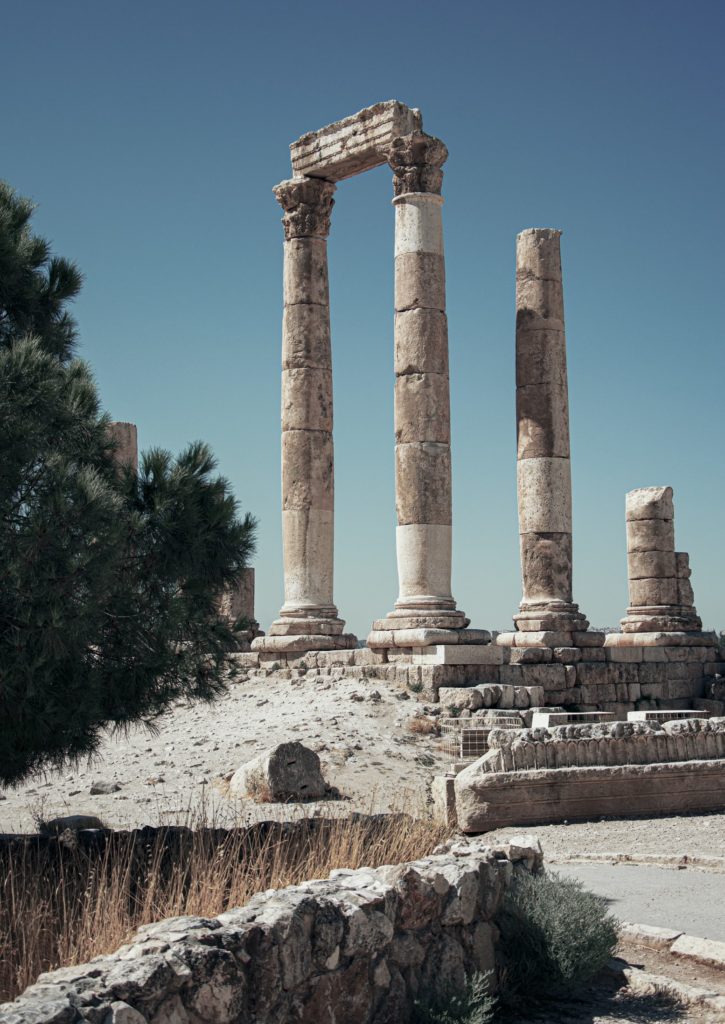
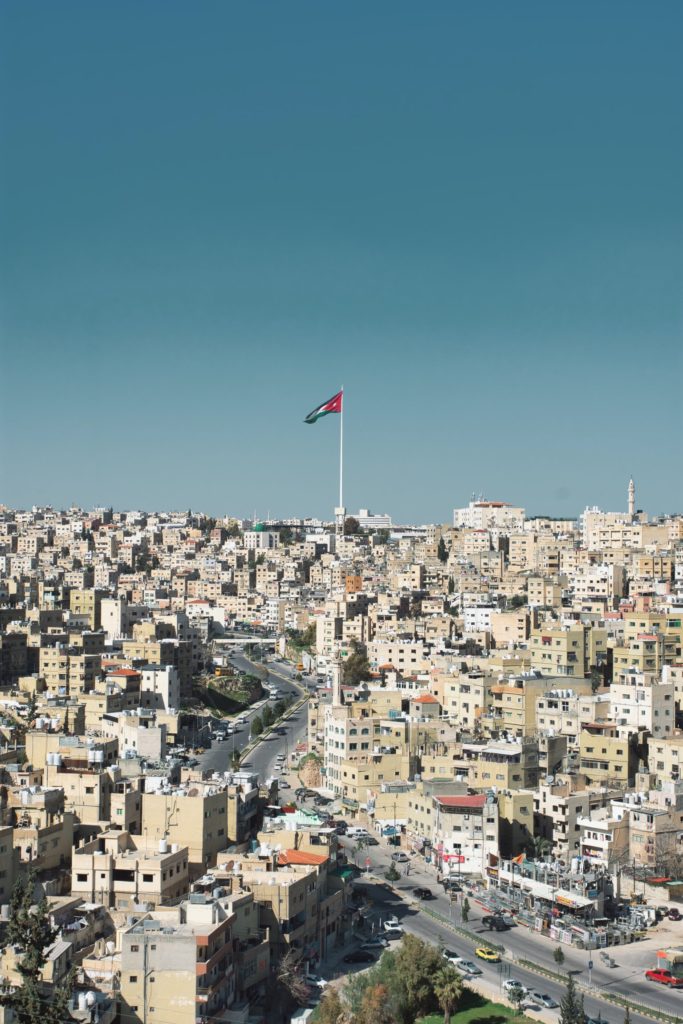
Travel to Jordan
Best time to go to Jordan – the 4 seasons in Jordan
The best time to visit Jordan is during the spring (March to May) and the fall (September to November) when the weather is mild and pleasant, and the crowds are smaller. During these months, temperatures are usually in the comfortable range of 20-25°C (68-77°F), and rainfall is infrequent. This makes it the perfect time to explore Jordan’s historical sites, hike its beautiful nature reserves, and enjoy the stunning scenery.
Summer (June to August) can be scorching hot in Jordan, with temperatures reaching up to 40°C (104°F) in some areas. This can make outdoor activities uncomfortable and even dangerous. However, this is also the time when many locals and tourists head to the coast of the Red Sea for water activities and beach relaxation.
Winter (December to February) in Jordan is mild, with temperatures ranging between 5-15°C (41-59°F), although it can get colder in the mountains. There may be occasional rain, and some roads in the remote areas can be difficult to access due to snow. However, this can also be a beautiful time to visit as the landscapes are lush and green.
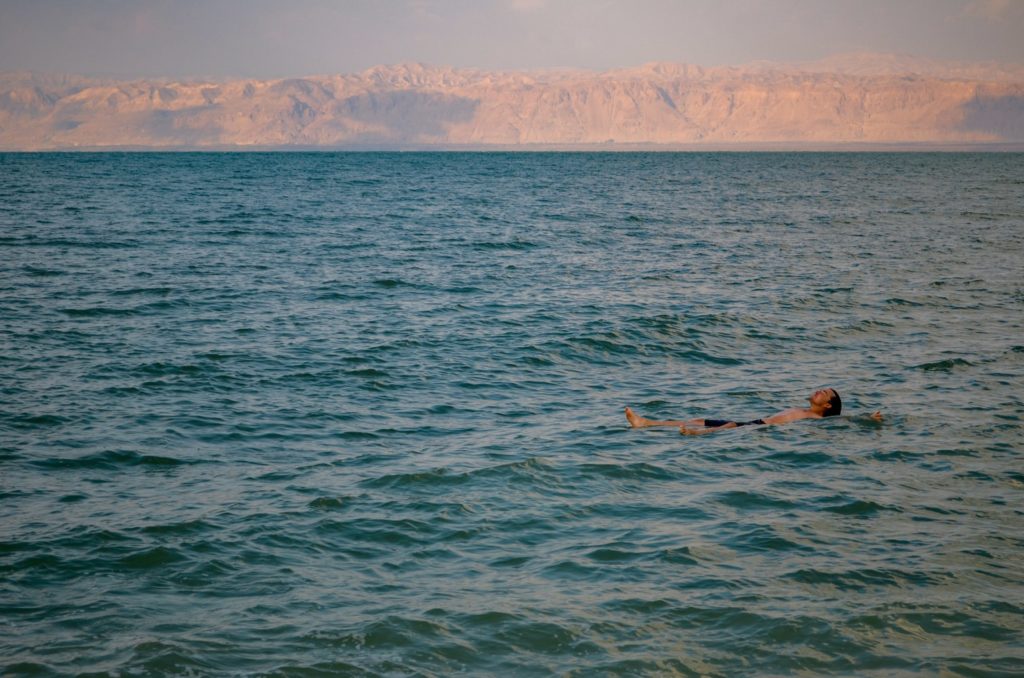
Visa Requirements
visitors from most countries, including Americans and Europeans, need a visa to enter Jordan. The only exceptions are citizens of a few Arab countries who can enter without a visa or obtain a visa on arrival.
Visitors can obtain a visa to Jordan in several ways. The most convenient way is to apply for an eVisa online before arrival. The eVisa allows you to stay in Jordan for up to 30 days and is valid for 3 months from the date of issuance.
Alternatively, visitors can obtain a visa on arrival at the airport or land border. This visa is valid for up to 2 weeks and can be extended for up to 1 month at any police station in Jordan.
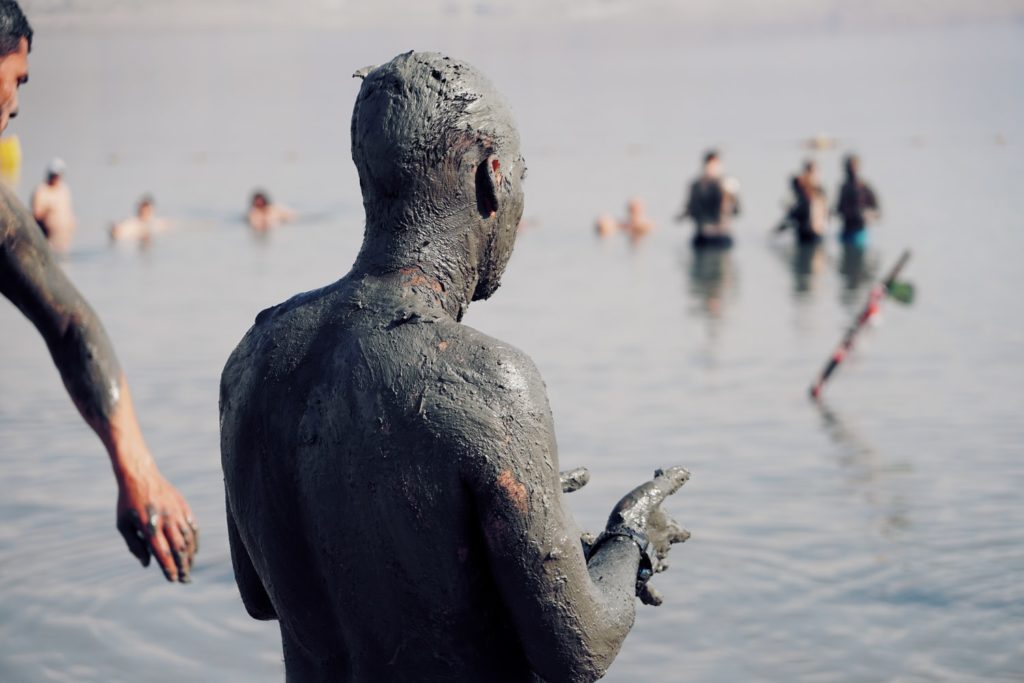
How to get around Jordan
There are several ways to get around Jordan, including public transportation, taxis, rental cars, and private tours.
Public transportation in Jordan is affordable but can be limited and not very convenient for tourists. Buses are the main form of public transport, and they operate between major cities and towns, but the schedules can be irregular, and the buses can be crowded. There are also minibusses, called servees, which operate on fixed routes and can be hailed on the street. However, these are not recommended for tourists as they can be overcrowded and unsafe.
Taxis are widely available in Jordan and are a convenient way to get around, especially within cities. They are relatively cheap, and the fares are usually negotiated before the journey. However, it is important to ensure that the meter is used, or agree on a price in advance to avoid being overcharged.
Rental cars are another popular option for getting around Jordan. The major international car rental companies have offices at the airports and in the major cities. However, driving in Jordan can be challenging due to the unfamiliar road conditions, aggressive driving, and lack of road signs in some areas. It is important to have a good GPS and drive defensively.
Finally, private tours are a great way to explore Jordan, especially if you are short on time or prefer a more personalized experience. There are many tour operators that offer a range of tours, from historical and cultural tours to adventure and outdoor activities. These tours can be customized to your interests and preferences and can include transportation, accommodation, and guided tours.
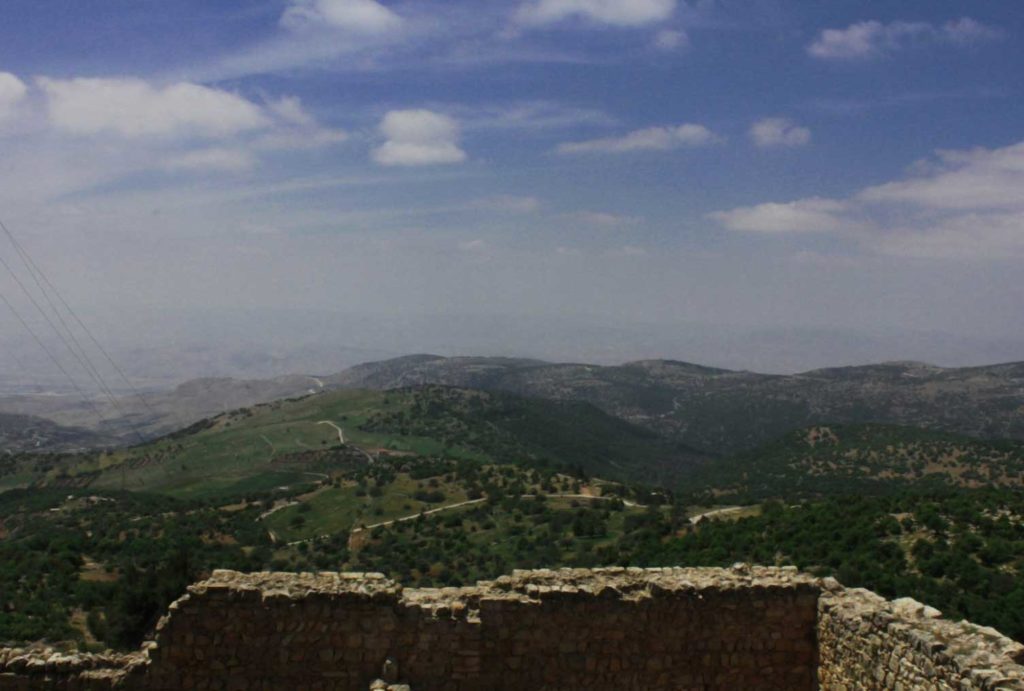
Explore the regions of Jordan
Jordan is divided into 12 regions, each with its own unique character and points of interest. Here is a brief overview of each region and some of the top attractions and activities:
Amman: Jordan’s capital city is a bustling metropolis with a rich history and culture. Visitors can explore the ancient Roman Theater, the Citadel, and the Museum of Jordan, which houses artifacts dating back to prehistoric times. The city is also known for its vibrant markets, such as the famous Rainbow Street, where visitors can sample local foods and shop for souvenirs.
Jerash: Located north of Amman, Jerash is one of the best-preserved Roman cities in the world. Visitors can explore the ancient ruins of the city, including the Hippodrome, the Oval Plaza, and the Temple of Artemis.
Ajloun: Known for its beautiful green hills and forests, Ajloun is home to the Ajloun Castle, an ancient fortress built in the 12th century. Visitors can also hike in the nearby nature reserves and enjoy the beautiful views of the Jordan Valley.
Irbid: Irbid is a university town with a vibrant arts and culture scene. Visitors can explore the many galleries and museums, such as the Jordan Museum of Popular Tradition and the Dar As-Saraya Museum.
Mafraq: This region is home to several historical and religious sites, such as the Shrine of Prophet Hud and the Umm Qais ruins, which offer stunning views of the Sea of Galilee and the Golan Heights.
Zarqa: Located east of Amman, Zarqa is an industrial city with several historical sites, including the Roman Bridge, the Shrine of Abu Darweesh, and the Hisham Palace.
Madaba: This region is known for its mosaics, including the famous Madaba Map, a 6th-century mosaic map of Jerusalem and the Holy Land. Visitors can also explore the ancient ruins of the city and the nearby Mount Nebo, where Moses is said to have seen the Promised Land.
Karak: This region is home to the Karak Castle, an ancient fortress built by the Crusaders in the 12th century. Visitors can also explore the nearby Dana Nature Reserve, which is known for its stunning landscapes and biodiversity.
Tafilah: Tafilah is a mountainous region known for its beautiful scenery and outdoor activities, such as hiking and camping. Visitors can also explore the nearby Greco-Roman city of Tafila, which dates back to the 2nd century AD.
Ma’an: This region is home to the ancient city of Petra, one of the Seven Wonders of the World. Visitors can explore the stunning red rock formations and the ancient ruins of the city, including the Treasury, the Monastery, and the Roman Theater.
Aqaba: Located on the Red Sea, Aqaba is a popular destination for water activities, such as snorkeling, diving, and swimming. Visitors can also explore the nearby Wadi Rum Desert and the ancient city of Ayla.
Ma’daba: This region is known for its hot springs, such as the Hammamat Ma’in, which is a popular destination for spa treatments and relaxation. Visitors can also explore the nearby Mukawir Castle, the biblical site of Herod’s palace, and the ancient ruins of Machaerus.
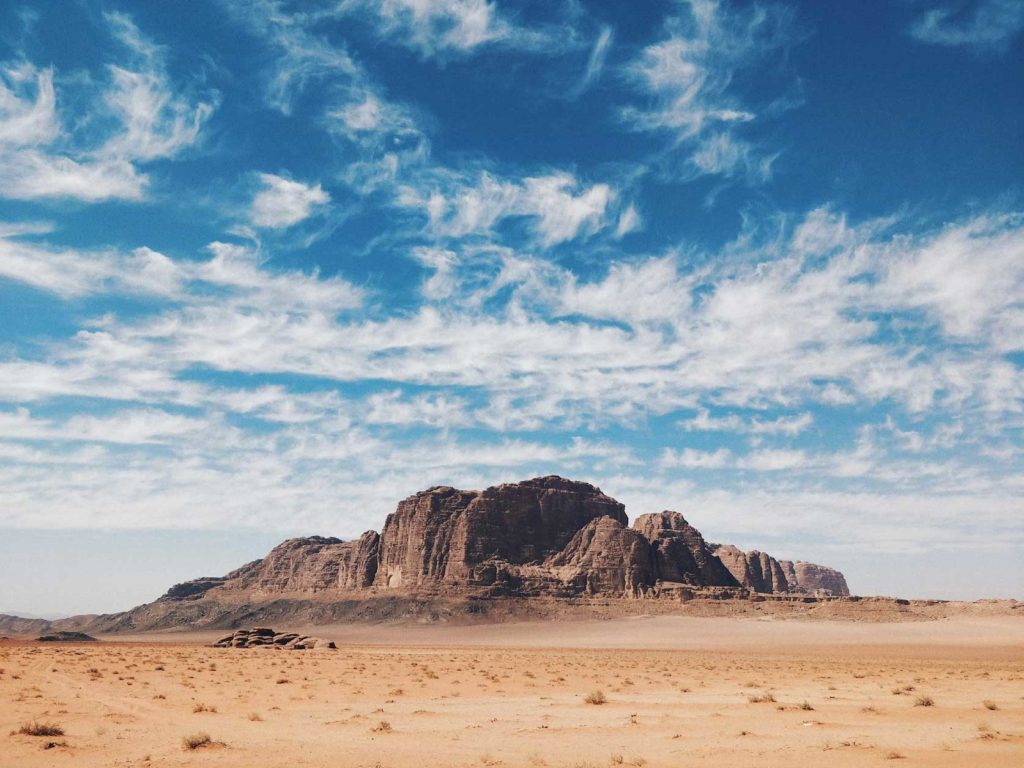
Explore the cities in Jordan
Here is a brief overview of the main cities in Jordan, their landmarks, and fun things to do:
Amman: Jordan’s capital city is a bustling metropolis with a rich history and culture. Visitors can explore the ancient Roman Theater, the Citadel, and the Museum of Jordan, which houses artifacts dating back to prehistoric times. The city is also known for its vibrant markets, such as the famous Rainbow Street, where visitors can sample local foods and shop for souvenirs.
Petra: The ancient city of Petra is one of the Seven Wonders of the World and a UNESCO World Heritage Site. Visitors can explore the stunning red rock formations and the ancient ruins of the city, including the Treasury, the Monastery, and the Roman Theater. The city is also known for its beautiful landscapes, such as the Siq canyon and the Petra Night Show, where the city is lit up by candles and lanterns.
Aqaba: Located on the Red Sea, Aqaba is a popular destination for water activities, such as snorkeling, diving, and swimming. Visitors can also explore the nearby Wadi Rum Desert and the ancient city of Ayla. The city is also known for its vibrant nightlife, with many bars and restaurants offering live music and entertainment.
Jerash: Located north of Amman, Jerash is one of the best-preserved Roman cities in the world. Visitors can explore the ancient ruins of the city, including the Hippodrome, the Oval Plaza, and the Temple of Artemis. The city is also known for its annual Jerash Festival, which features music, dance, and theater performances.
Madaba: This city is known for its mosaics, including the famous Madaba Map, a 6th-century mosaic map of Jerusalem and the Holy Land. Visitors can also explore the ancient ruins of the city and the nearby Mount Nebo, where Moses is said to have seen the Promised Land. The city is also home to the Madaba Archaeological Park, which features the remains of several Byzantine churches and a Roman water system.
Irbid: Irbid is a university town with a vibrant arts and culture scene. Visitors can explore the many galleries and museums, such as the Jordan Museum of Popular Tradition and the Dar As-Saraya Museum. The city is also known for its historic Umm Qais ruins, which offer stunning views of the Sea of Galilee and the Golan Heights.
Karak: This city is home to the Karak Castle, an ancient fortress built by the Crusaders in the 12th century. Visitors can also explore the nearby Dana Nature Reserve, which is known for its stunning landscapes and biodiversity. The city is also home to the Al-Mazar Islamic Museum, which features a collection of Islamic artifacts and exhibits.
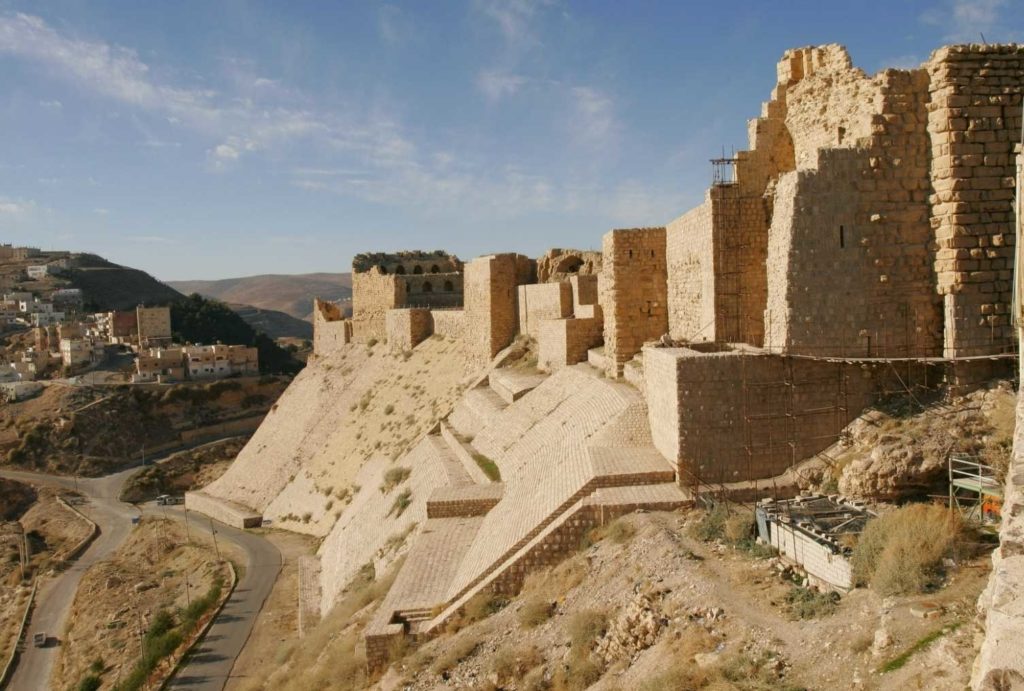
The culture and way of life in Jordan
Jordan has a rich and diverse culture that has been shaped by its history, geography, and religion. The majority of Jordanians are Muslim, and Islamic traditions and customs play an important role in everyday life. However, Jordan is also home to several Christian and minority communities, which add to the cultural diversity of the country.
Family is an essential aspect of Jordanian culture, and many families live in close proximity to each other. Respect for elders and hospitality are highly valued, and it is common for families to welcome guests into their homes for meals and gatherings. Traditional clothing is also an important part of Jordanian culture, with men often wearing a dishdasha and women wearing a hijab or abaya.
Food is another important part of Jordanian culture, and the cuisine is a blend of Middle Eastern and Mediterranean flavors. Popular dishes include falafel, hummus, shawarma, and mansaf, a traditional Bedouin dish made with lamb, rice, and yogurt sauce. Tea is also a staple of Jordanian culture, and it is common for visitors to be offered a cup of sweetened tea as a sign of hospitality.
Music and dance are also an integral part of Jordanian culture, with traditional folk dances such as dabke and zarb often performed at weddings and celebrations. Jordan is also home to several music festivals and cultural events throughout the year, such as the Jerash Festival and the Al Balad Music Festival.
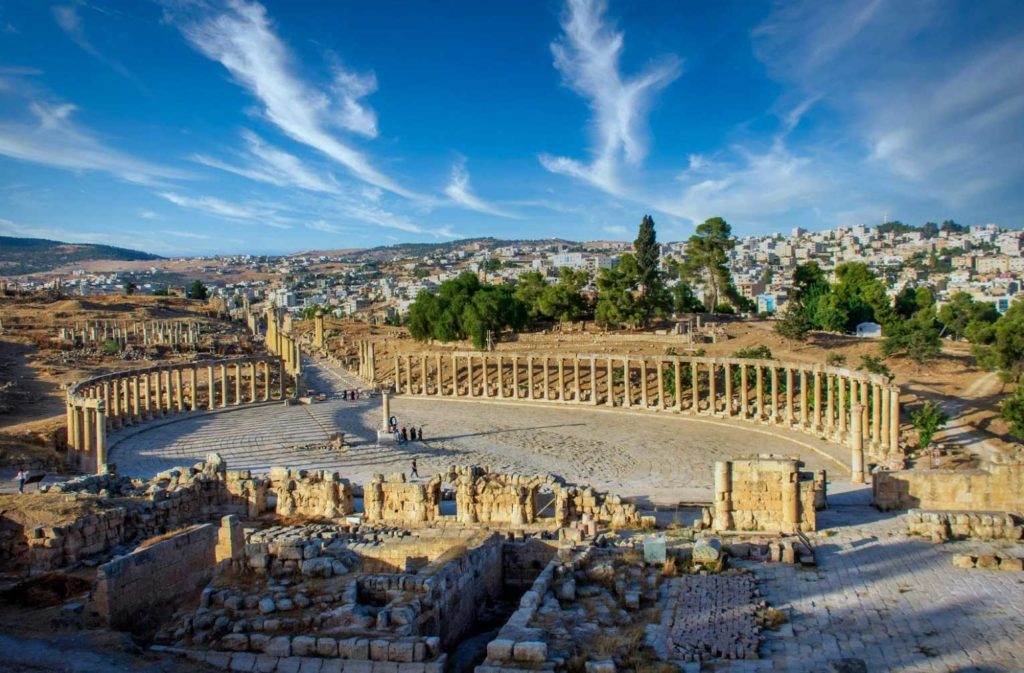
Top attractions in Jordan
Jordan is a country rich in history, culture, and natural beauty, offering visitors a wide range of must-see destinations. Here are some of the top attractions in Jordan that you should not miss:
Petra: The ancient city of Petra is one of the Seven Wonders of the World and a UNESCO World Heritage Site. The city is carved into the red rock mountains and dates back to the 6th century BC. Visitors can explore the stunning red rock formations and the ancient ruins of the city, including the Treasury, the Monastery, and the Roman Theater.
Wadi Rum: The Wadi Rum desert is a breathtaking landscape of sandstone mountains and red sand dunes. Visitors can explore the desert on camel or horseback, hike the many trails, or take a jeep tour. The desert is also home to the nomadic Bedouin people, who offer visitors a glimpse into their traditional way of life through guided tours and overnight stays in traditional Bedouin camps.
Dead Sea: The Dead Sea is one of the world’s saltiest bodies of water and is famous for its therapeutic properties. Visitors can float in the mineral-rich water, enjoy a spa treatment, or cover themselves in the healing mud. The Dead Sea is also surrounded by beautiful landscapes, including the Mujib Biosphere Reserve and the Dana Nature Reserve.
Amman: Jordan’s capital city is a bustling metropolis with a rich history and culture. Visitors can explore the ancient Roman Theater, the Citadel, and the Museum of Jordan, which houses artifacts dating back to prehistoric times. The city is also known for its vibrant markets, such as the famous Rainbow Street, where visitors can sample local foods and shop for souvenirs.
Jerash: Located north of Amman, Jerash is one of the best-preserved Roman cities in the world. Visitors can explore the ancient ruins of the city, including the Hippodrome, the Oval Plaza, and the Temple of Artemis.
Aqaba: Located on the Red Sea, Aqaba is a popular destination for water activities, such as snorkeling, diving, and swimming. Visitors can also explore the nearby Wadi Rum Desert and the ancient city of Ayla. The city is also known for its vibrant nightlife, with many bars and restaurants offering live music and entertainment.
Madaba: This city is known for its mosaics, including the famous Madaba Map, a 6th-century mosaic map of Jerusalem and the Holy Land. Visitors can also explore the ancient ruins of the city and the nearby Mount Nebo, where Moses is said to have seen the Promised Land.
Ajloun: Known for its beautiful green hills and forests, Ajloun is home to the Ajloun Castle, an ancient fortress built in the 12th century. Visitors can also hike in the nearby nature reserves and enjoy the beautiful views of the Jordan Valley.
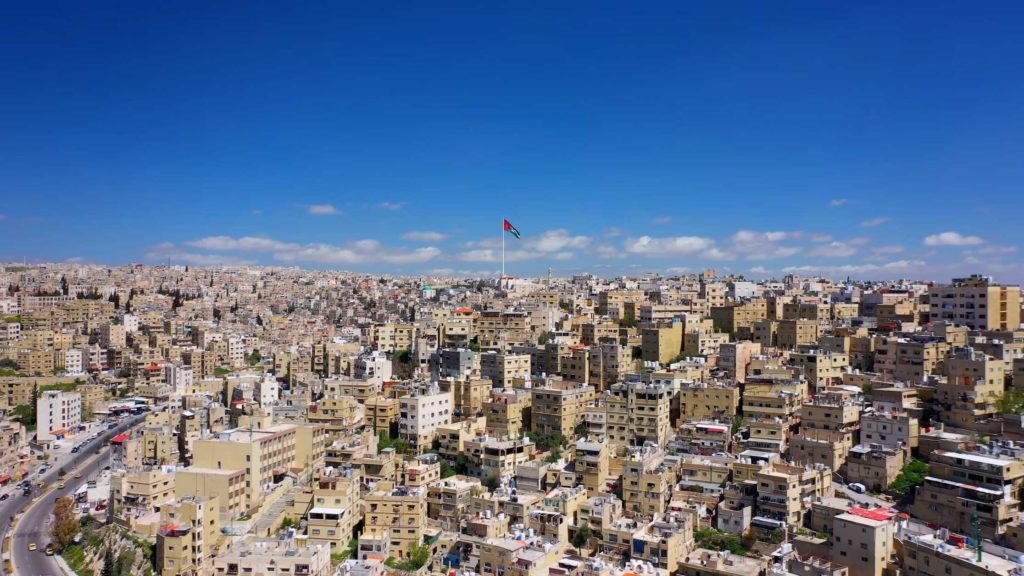
Top experiences in Jordan
Jordan is a country rich in history, culture, and natural beauty, offering visitors a wide range of must-do experiences. Here are some of the top experiences in Jordan that you should not miss:
Explore Petra: The ancient city of Petra is one of the Seven Wonders of the World and a UNESCO World Heritage Site. Visitors can explore the stunning red rock formations and the ancient ruins of the city, including the Treasury, the Monastery, and the Roman Theater. One must-do experience in Petra is walking through the narrow Siq canyon, which leads to the famous Treasury building.
Hike in Wadi Rum: The Wadi Rum desert is a breathtaking landscape of sandstone mountains and red sand dunes. Visitors can explore the desert on foot and hike the many trails, such as the Um Frouth Rock Bridge or the Burdah Rock Bridge. One must-do experience is camping under the stars in a traditional Bedouin camp and enjoying a traditional Bedouin dinner.
Float in the Dead Sea: The Dead Sea is one of the world’s saltiest bodies of water and is famous for its therapeutic properties. Visitors can float in the mineral-rich water, which is said to have healing benefits for the skin and body. One must-do experience is covering yourself in the healing mud and taking a relaxing float while enjoying the stunning views of the surrounding mountains.
Visit Jerash: Located north of Amman, Jerash is one of the best-preserved Roman cities in the world. Visitors can explore the ancient ruins of the city, including the Hippodrome, the Oval Plaza, and the Temple of Artemis. One must-do experience is watching a reenactment of a Roman chariot race in the Hippodrome.
Taste Jordanian cuisine: Jordanian cuisine is a blend of Middle Eastern and Mediterranean flavors, with popular dishes including falafel, hummus, shawarma, and mansaf, a traditional Bedouin dish made with lamb, rice, and yogurt sauce. One must-do experience is sampling the local cuisine at a traditional restaurant or visiting a local market to try street food.
Dive in Aqaba: Located on the Red Sea, Aqaba is a popular destination for water activities, such as snorkeling and diving. Visitors can explore the stunning coral reefs and underwater landscapes and see a variety of marine life, including colorful fish and sea turtles.
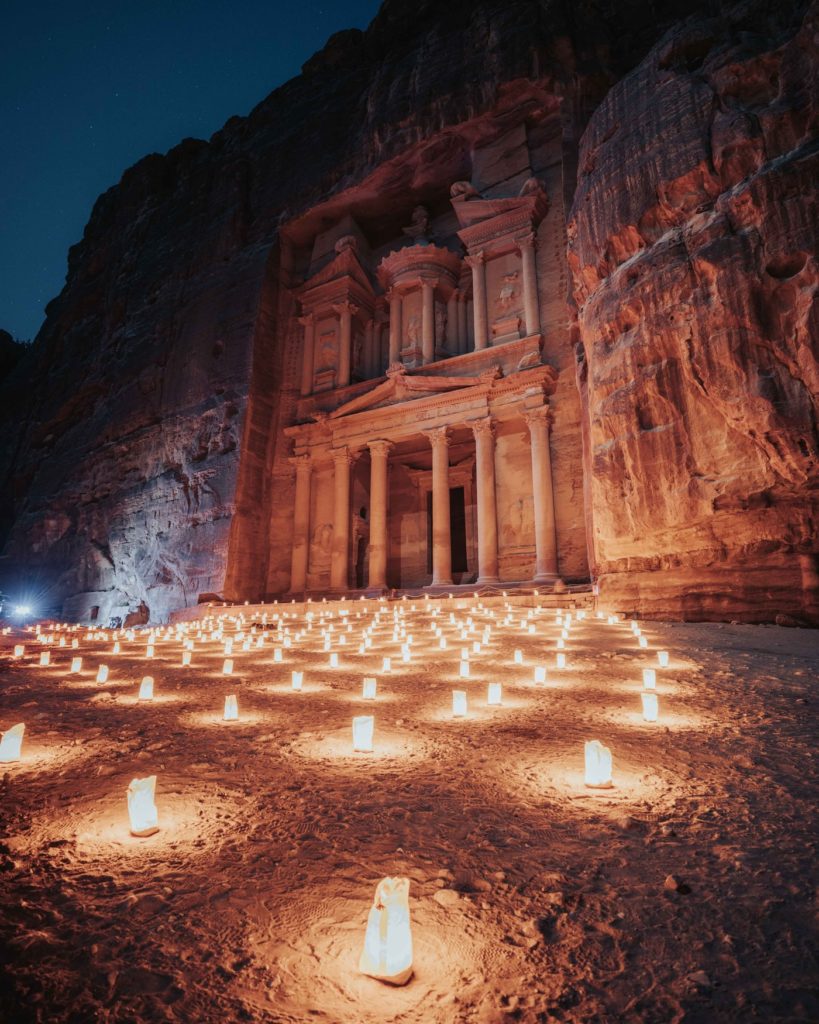
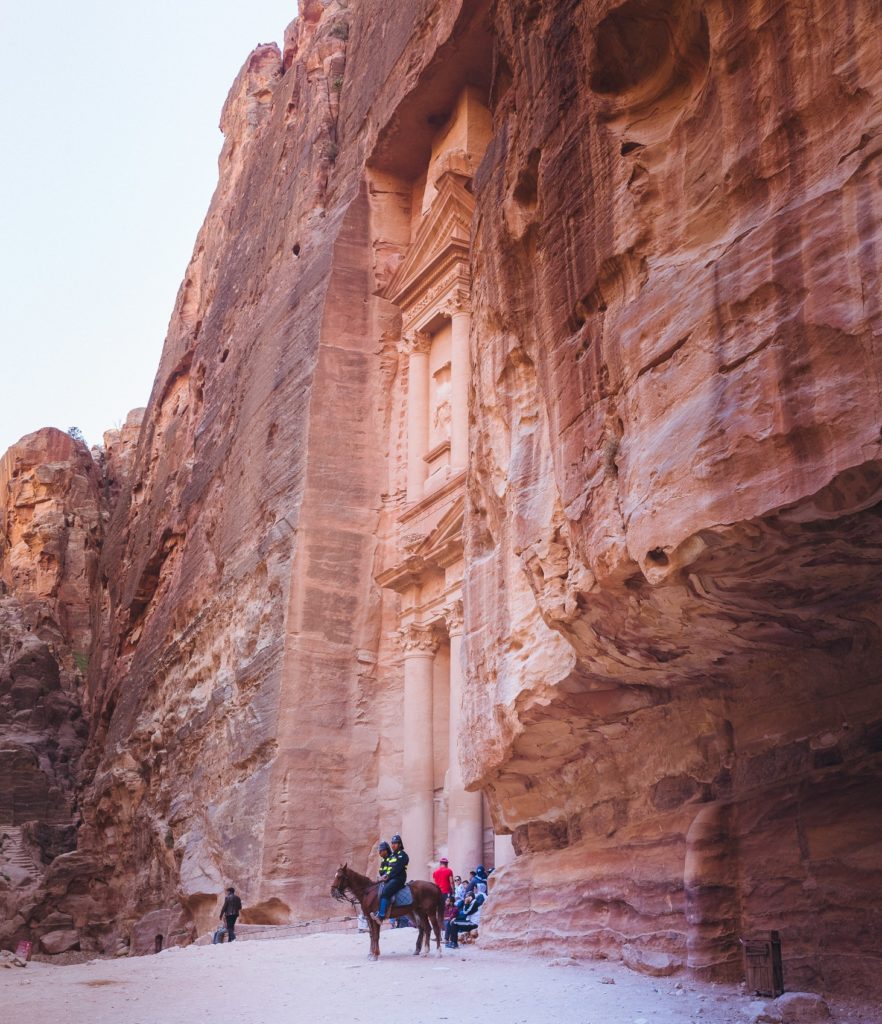
Where to stay in Jordan
Jordan is home to a range of luxurious hotels, each with its own unique charm and amenities. Here are some of the most iconic and luxurious hotels in Jordan:
The Four Seasons Hotel Amman: Located in the heart of Amman, the Four Seasons Hotel Amman offers luxurious accommodations and breathtaking views of the city. The hotel features an outdoor pool, spa, fitness center, and several dining options, including the award-winning La Capitale restaurant.
Kempinski Hotel Ishtar Dead Sea: Situated on the shores of the Dead Sea, the Kempinski Hotel Ishtar offers luxurious accommodations and stunning views of the sea and mountains. The hotel features several pools, a private beach, spa, fitness center, and several dining options, including the romantic Obelisk restaurant.
Movenpick Resort Petra: Located just steps away from the entrance to Petra, the Movenpick Resort Petra offers luxurious accommodations and easy access to the ancient city. The hotel features an outdoor pool, spa, fitness center, and several dining options, including the Al Saraya restaurant, which serves traditional Jordanian cuisine.
St. Regis Amman: The St. Regis Amman is a five-star luxury hotel located in the heart of Amman. The hotel features a spa, fitness center, several dining options, and a rooftop bar with stunning views of the city. The hotel also offers a butler service, which provides personalized attention to each guest.
W Amman Hotel: The W Amman Hotel is a stylish and modern luxury hotel located in the heart of Amman. The hotel features an outdoor pool, spa, fitness center, and several dining options, including the rooftop restaurant, Mesh. The hotel also offers a range of unique amenities, such as the W Insider, who can provide guests with insider access to the city’s best attractions and experiences.
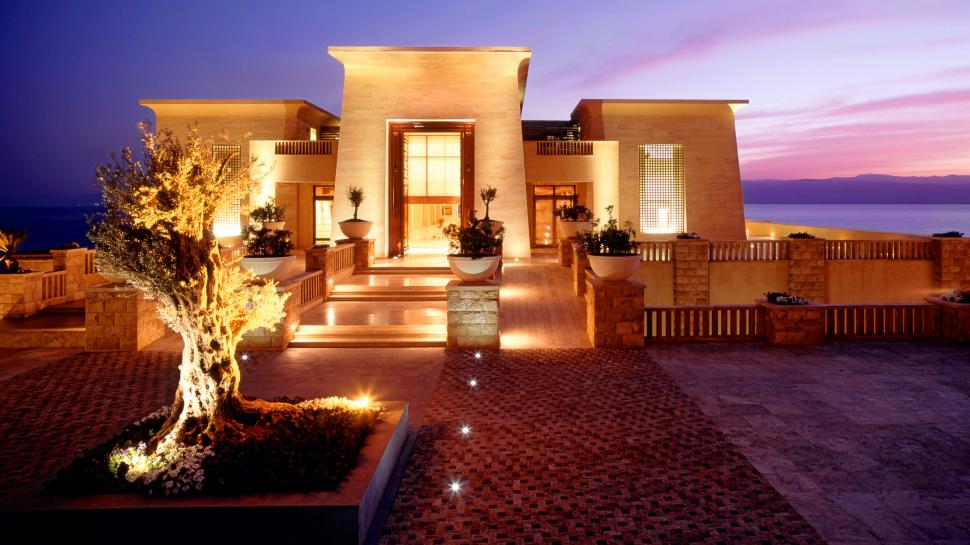

Food and drinks
Food specialities to try in Jordan
Jordanian cuisine is a blend of Middle Eastern and Mediterranean flavors, with a variety of dishes that are both delicious and unique. Here are some of the food specialties of Jordan and where to best taste them:
Mansaf: Mansaf is a traditional Bedouin dish made with lamb, rice, and yogurt sauce. It is often served on special occasions and is considered the national dish of Jordan. One of the best places to try mansaf is at Al Quds Restaurant in Amman.
Falafel: Falafel is a popular vegetarian dish made with ground chickpeas and spices, formed into balls and deep-fried. It is often served in pita bread with hummus, salad, and tahini sauce. One of the best places to try falafel is at Al-Quds Falafel in downtown Amman.
Kunafa: Kunafa is a sweet dessert made with shredded phyllo dough, cheese, and sweet syrup. It is a popular dessert during Ramadan and special occasions. One of the best places to try kunafa is at Habibah Sweets in downtown Amman.
Maqluba: Maqluba is a traditional Jordanian dish made with rice, chicken, and vegetables, cooked in a pot and then flipped over to serve. It is a hearty and flavorful dish that is often served for lunch or dinner. One of the best places to try maqluba is at Hashem Restaurant in downtown Amman.
Shawarma: Shawarma is a popular street food in Jordan, made with meat that is marinated, grilled, and then wrapped in pita bread with vegetables and sauce. One of the best places to try shawarma is at Al-Quds Pita in downtown Amman.
Jordanian Mezze: Jordanian Mezze is a collection of small dishes that are served as appetizers or snacks. They include hummus, baba ghanoush, tabbouleh, stuffed grape leaves, and many more. One of the best places to try Jordanian mezze is at Fakhr El-Din in Amman.
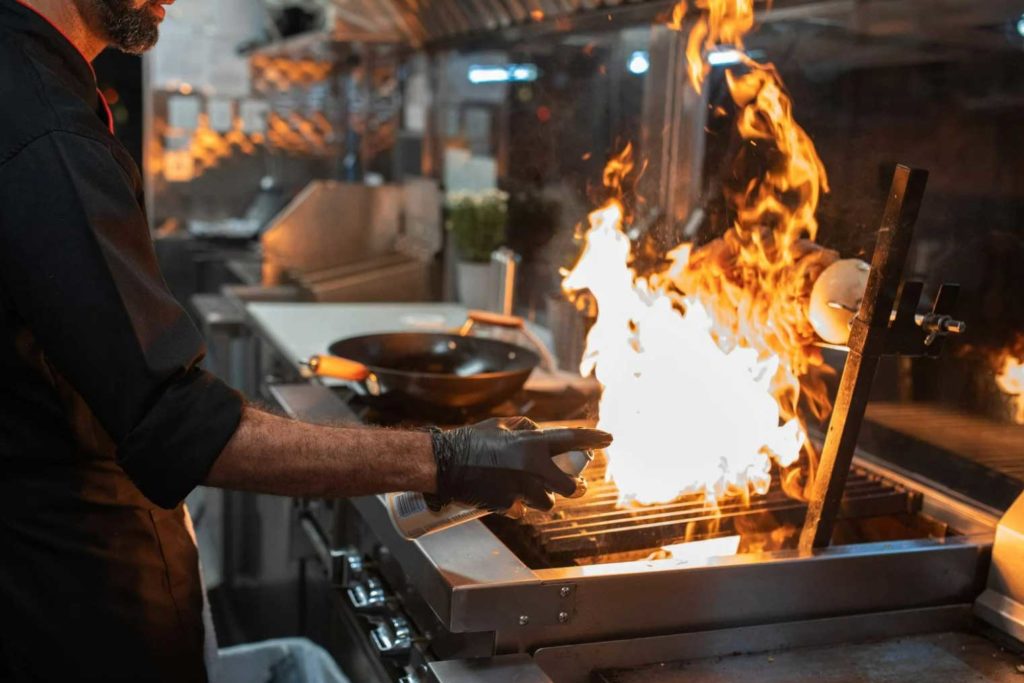
Drinks in Jordan
Jordanian cuisine is complemented by a range of traditional drinks that are both refreshing and delicious. Here are some of the popular drinks of Jordan:
Tea: Tea is a staple drink in Jordan and is often served to guests as a sign of hospitality. Jordanian tea is made with loose tea leaves, often flavored with mint or sage, and sweetened with sugar. One of the most popular places to enjoy tea in Jordan is at the many tea houses in downtown Amman.
Coffee: Coffee is also a popular drink in Jordan, with a strong and robust flavor. Jordanian coffee is often served with cardamom and sweetened with sugar. One of the best places to enjoy coffee in Jordan is at Cafe Jafra in downtown Amman, which has been serving coffee for over 70 years.
Arak: Arak is a traditional anise-flavored liquor that is popular in Jordan and the Middle East. It is often served as an aperitif or with meze dishes. One of the best places to enjoy Arak is at the rooftop bar at Wild Jordan Center in Amman, which offers stunning views of the city.
Jallab: Jallab is a sweet and refreshing drink made with dates, grape molasses, and rose water. It is often served with ice and pine nuts and is a popular drink during the hot summer months. One of the best places to enjoy Jallab is at Cafe Strada in downtown Amman.
Lemonade: Lemonade is a popular drink in Jordan, often served with mint and sugar. It is a refreshing drink that is perfect for hot summer days. One of the best places to enjoy lemonade is at the many juice shops in Amman, which offer a variety of fresh juices and smoothies.
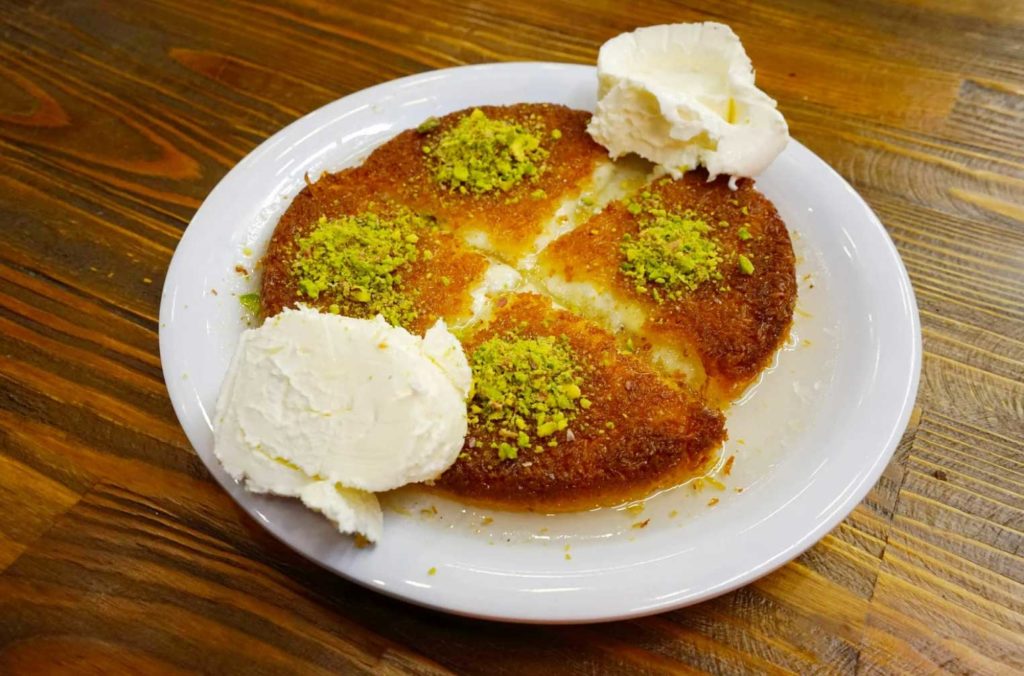
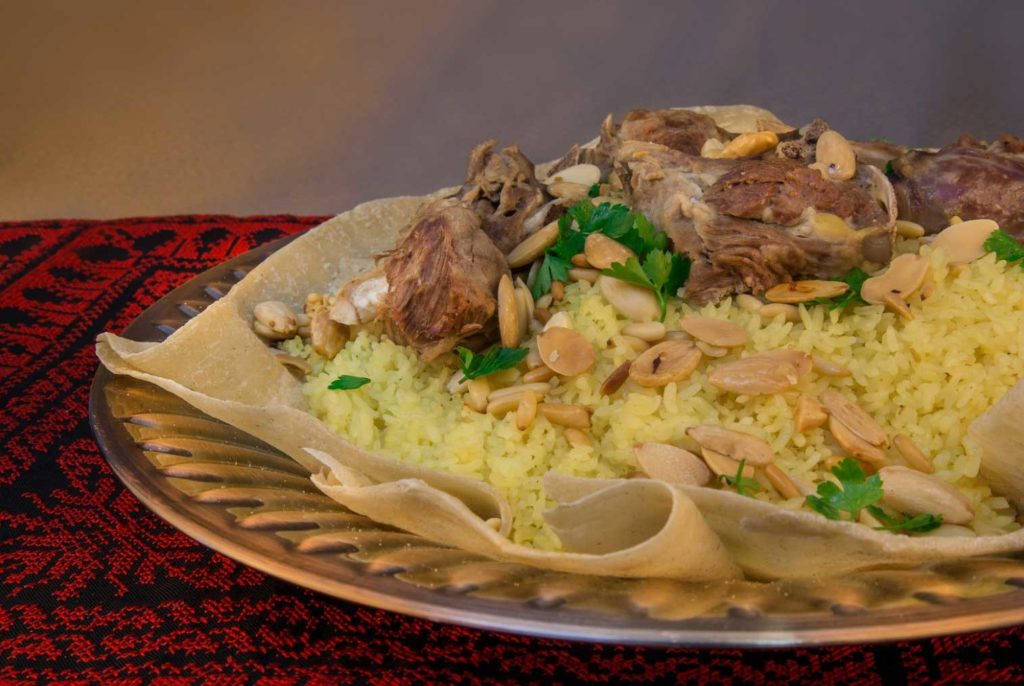
Top 10 restaurants in Jordan
Jordan’s cuisine is a blend of Middle Eastern and Mediterranean flavors, with a variety of dishes that are both delicious and unique. Here are the top 10 restaurants in Jordan, their chefs, and specialties:
Fakhr El-Din: Located in the heart of Amman, Fakhr El-Din is a fine dining restaurant that offers traditional Jordanian cuisine. The chef, Fakhr El-Din, is known for his creative dishes that blend modern and traditional flavors. Some of the specialties include stuffed vine leaves, lamb chops, and seabass fillet.
La Capitale: La Capitale is located in the Four Seasons Hotel in Amman and offers French-inspired cuisine. The chef, Julien Al Khal, has worked in Michelin-starred restaurants in France and brings his expertise to the menu. Some of the specialties include foie gras, beef tenderloin, and chocolate souffle.
Sufra: Sufra is a casual restaurant in Amman that offers traditional Jordanian cuisine. The chef, Dima Sharif, is known for her inventive dishes that showcase the flavors of Jordan. Some of the specialties include maqluba, stuffed zucchini, and kunafa.
Beit Sitti: Beit Sitti is a unique cooking school and restaurant in Amman that offers traditional Jordanian cuisine. The chef, Maria Haddad, teaches visitors how to prepare traditional dishes while enjoying a meal in a cozy and welcoming setting. Some of the specialties include mansaf, musakhan, and maamoul cookies.
Joz Hind: Joz Hind is a casual restaurant in Amman that offers Lebanese-inspired cuisine. The chef, Hind Sukar, is known for her creative dishes that blend Lebanese and Jordanian flavors. Some of the specialties include hummus, shawarma, and fattoush salad.
Hashem Restaurant: Hashem Restaurant is a popular restaurant in downtown Amman that offers traditional Jordanian cuisine. The restaurant is known for its affordable prices and generous portions. Some of the specialties include falafel, hummus, and foul.
Haret Jdoudna: Haret Jdoudna is a restaurant located in a restored traditional Jordanian village near Petra. The restaurant offers traditional Jordanian cuisine and is known for its stunning views of the surrounding mountains. Some of the specialties include lamb shank, mezze, and maamoul.
Tawaheen Al Hawa: Tawaheen Al Hawa is a fine dining restaurant in Amman that offers Mediterranean-inspired cuisine. The chef, Eyad AbuHawa, is known for his creative dishes that showcase fresh and seasonal ingredients. Some of the specialties include octopus, sea bass, and chocolate fondant.
Karam Beirut: Karam Beirut is a Lebanese restaurant in Amman that offers traditional Lebanese cuisine. The chef, Hani Moustapha, is known for his authentic dishes that showcase the flavors of Lebanon. Some of the specialties include kibbeh, shawarma, and grilled meats.
Azkadenya: Azkadenya is a casual restaurant in Amman that offers traditional Jordanian cuisine with a modern twist. The restaurant is known for its creative dishes and funky decor. Some of the specialties include musakhan rolls, shakshuka, and stuffed falafel.
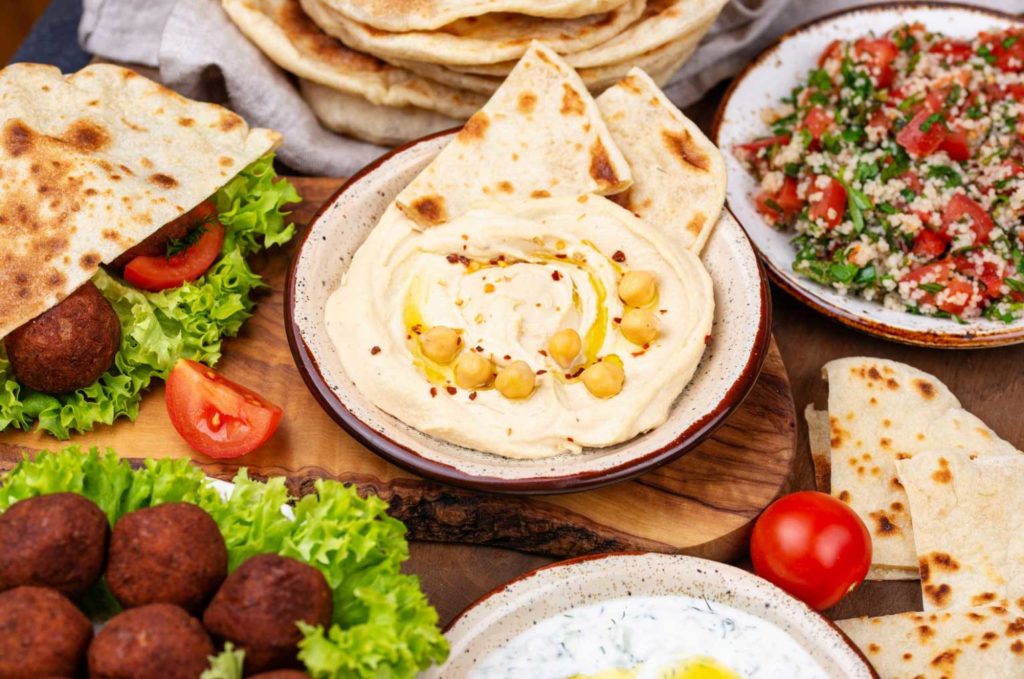
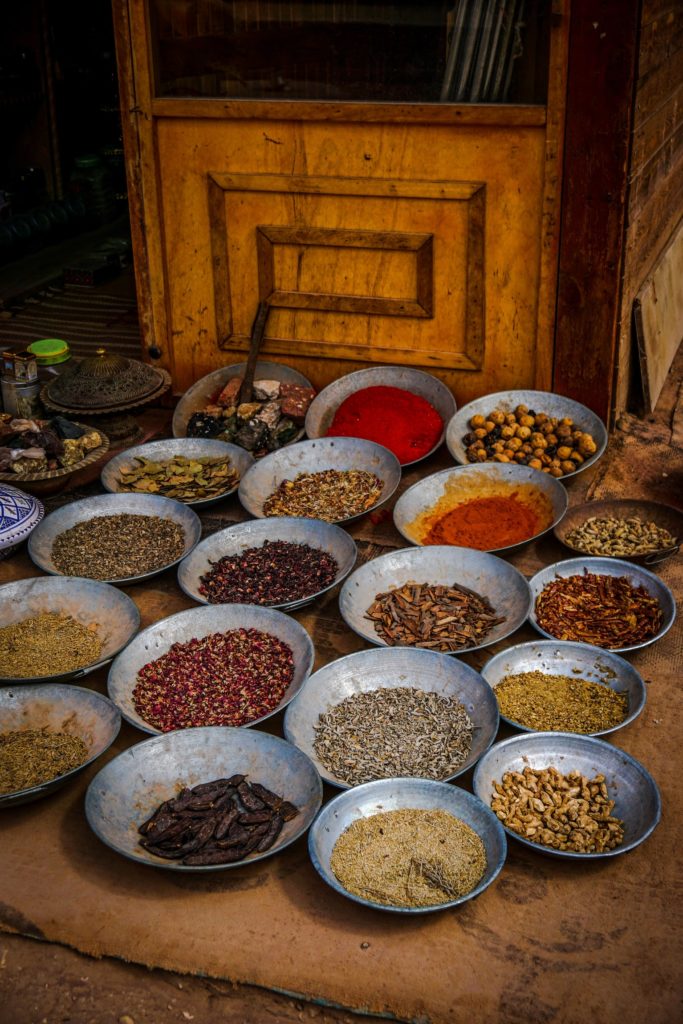
What not to do in Jordan, things to avoid
Jordan is a friendly and welcoming country that values its traditions and culture. To make the most of your visit to Jordan, it’s important to be aware of cultural norms and practices. Here are some things to avoid and not do in Jordan:
Dress inappropriately: Jordan is a predominantly Muslim country, and it’s important to dress modestly and respectfully, especially when visiting religious sites. It’s recommended to cover your shoulders and knees, and avoid wearing revealing clothing.
Show public displays of affection: Public displays of affection, such as kissing and hugging, are not common in Jordanian culture and may be considered inappropriate.
Drink alcohol in public: While alcohol is available in Jordan, it’s not widely consumed in public places. It’s important to drink alcohol in licensed establishments and avoid public drunkenness.
Disrespect the royal family or government: Jordan is a constitutional monarchy, and it’s important to show respect to the royal family and government. Avoid making negative comments or criticisms of the government or the royal family.
Eat or drink during Ramadan: Ramadan is a holy month in Islam, and Muslims fast during the day. It’s important to respect this practice and avoid eating or drinking in public during daylight hours.
Use your left hand: In Jordanian culture, the left hand is considered unclean, and it’s important to use your right hand for eating, greeting, and giving and receiving objects.
Disrespect religious sites: Jordan is home to many religious sites, including mosques, churches, and temples. It’s important to show respect to these sites and dress appropriately, remove shoes when required, and avoid taking photographs of people praying without permission.

Shopping, taxes and tipping in Jordan
The sales tax in Jordan is 16%, and it is usually included in the price of goods and services. Some shops may display prices without the tax, so it’s important to check whether the price includes tax or not.
In addition to the sales tax, some restaurants and cafes may add a service charge to the bill, usually around 10%. This is a fee charged for the service provided by the staff, and it is not a mandatory charge. If the service charge is not included in the bill, it’s common to leave a tip of around 10% of the total bill.
It’s important to note that haggling is common in Jordanian markets, especially when purchasing souvenirs and other items from street vendors. However, haggling is not appropriate in formal shops and retail outlets.
When paying for goods or services in Jordan, it’s common to pay with cash, as credit card and debit card payments are not widely accepted in smaller shops and markets. ATMs are widely available in major cities, and it’s advisable to carry small denominations of Jordanian Dinar in cash for purchases in smaller establishments.
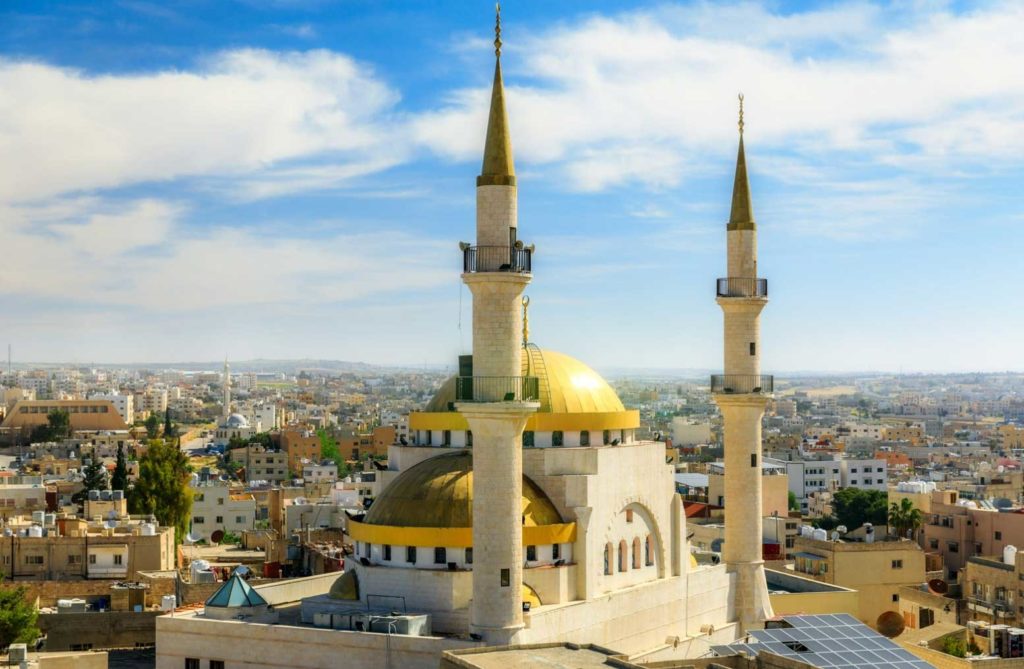
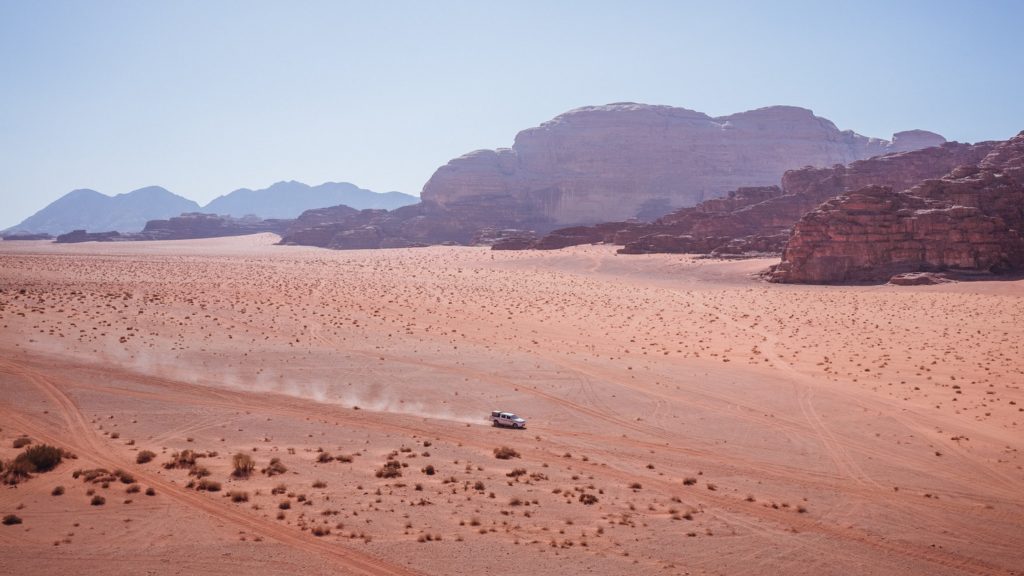
Safety and security in Jordan
Jordan is a relatively safe and stable country, and millions of tourists visit the country each year without incident. However, as with any destination, it’s important to take certain precautions to ensure your safety and security while in Jordan. Here are some tips for staying safe in Jordan:
Be aware of your surroundings: It’s important to be aware of your surroundings at all times, especially in crowded areas such as markets and tourist attractions. Keep an eye out for suspicious behavior or activity, and report anything suspicious to the authorities.
Follow local customs and laws: Jordan is a predominantly Muslim country, and visitors should respect local customs and laws. Dress modestly and appropriately, especially when visiting religious sites, and avoid public displays of affection.
Avoid public demonstrations: Public demonstrations and protests can occur in Jordan, and it’s best to avoid these events as they can become violent. Monitor local media and news sources for information on potential demonstrations.
Be cautious when using public transportation: Public transportation in Jordan can be crowded and chaotic. Keep an eye on your belongings, especially in crowded areas such as buses and taxis.
Be cautious when hiking and trekking: Jordan is home to many beautiful hiking trails and trekking routes. However, it’s important to take precautions when hiking, such as staying on marked trails, carrying plenty of water, and informing others of your route.
Avoid traveling to border areas: Jordan shares borders with several countries, some of which may be unstable or unsafe. It’s best to avoid traveling to border areas and to check with local authorities for updated travel advisories.
Keep your valuables safe: Petty crime such as pickpocketing and theft can occur in Jordan, especially in crowded areas. Keep your valuables safe and secure, and avoid carrying large amounts of cash or valuable items.
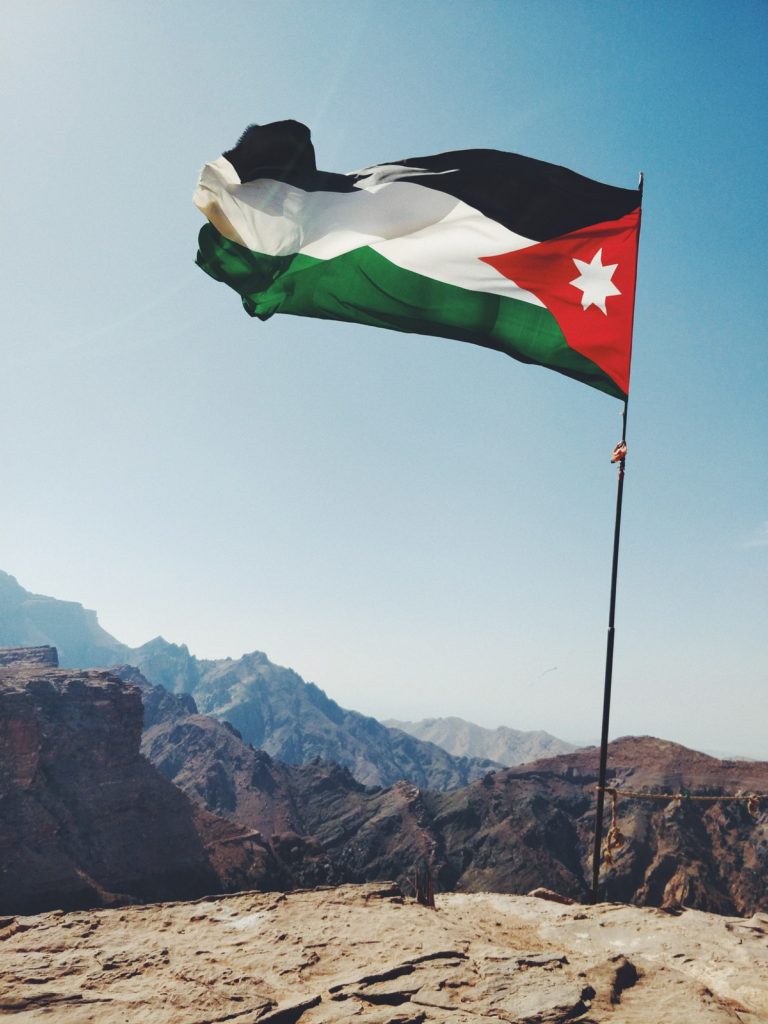

Final practical advice for travellers
Electricity: Jordan uses the Type C and Type D electrical plugs, which are the same as the ones used in Europe and India. The standard voltage is 230V, and the frequency is 50Hz. Visitors may need to bring a travel adapter to charge their electronic devices.
Currency: The official currency of Jordan is the Jordanian Dinar (JOD). ATMs are widely available in major cities, and credit and debit cards are accepted in larger shops and restaurants. However, it’s advisable to carry cash in smaller denominations for purchases in smaller establishments.
Language: Arabic is the official language of Jordan, but many people also speak English, especially in tourist areas. It’s a good idea to learn some basic Arabic phrases and to carry a phrasebook or translation app.
Transportation: Taxis and buses are widely available in Jordan, and many tourist sites are easily accessible by public transportation. Private car rental is also available, but visitors should be aware of the driving habits and road conditions in Jordan.
Dress code: Jordan is a predominantly Muslim country, and visitors should dress modestly and appropriately, especially when visiting religious sites. Women should cover their shoulders and knees, and men should avoid wearing shorts.
Ramadan: Ramadan is a holy month in Islam, and Muslims fast during the day. Visitors should be respectful of this practice and avoid eating or drinking in public during daylight hours.
Internet and communication: Internet and Wi-Fi are widely available in major cities in Jordan. International roaming may be available, but visitors can also purchase local SIM cards for their phones.
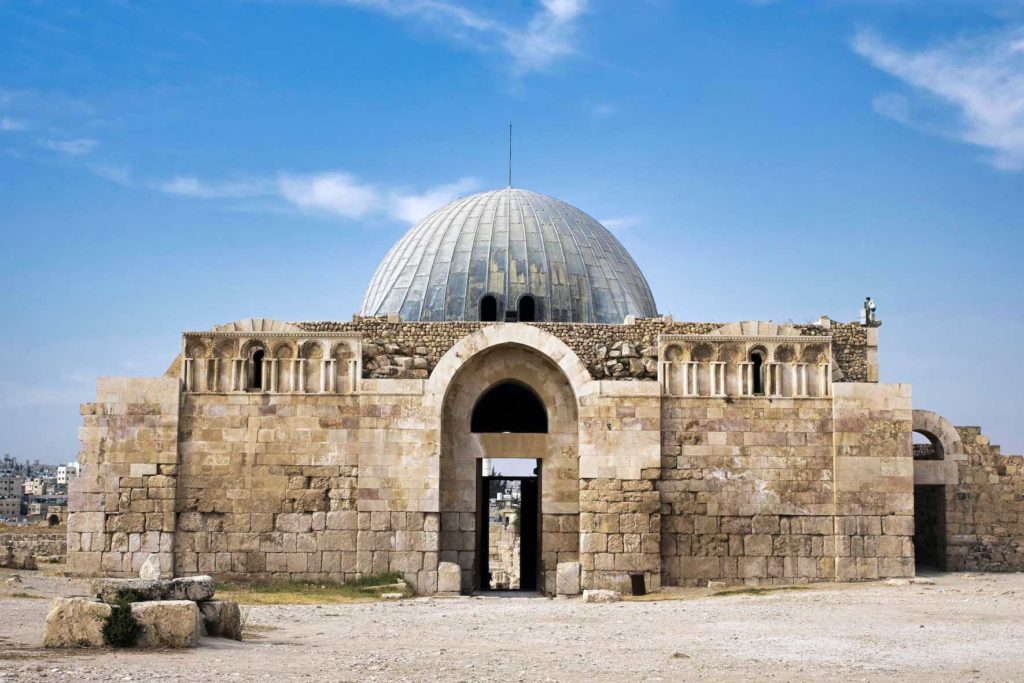
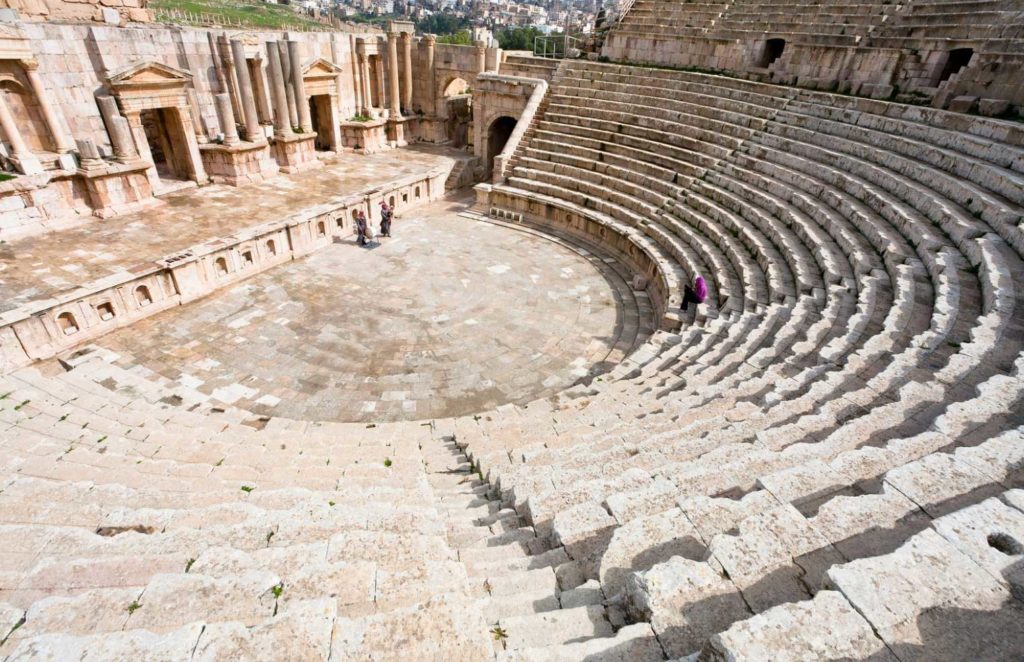
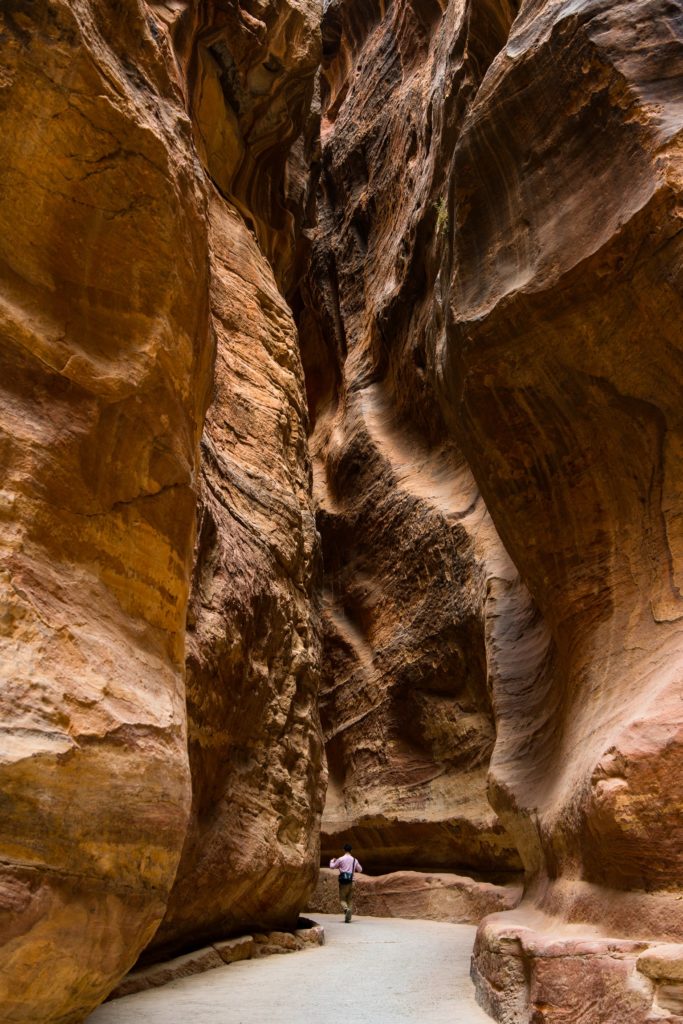

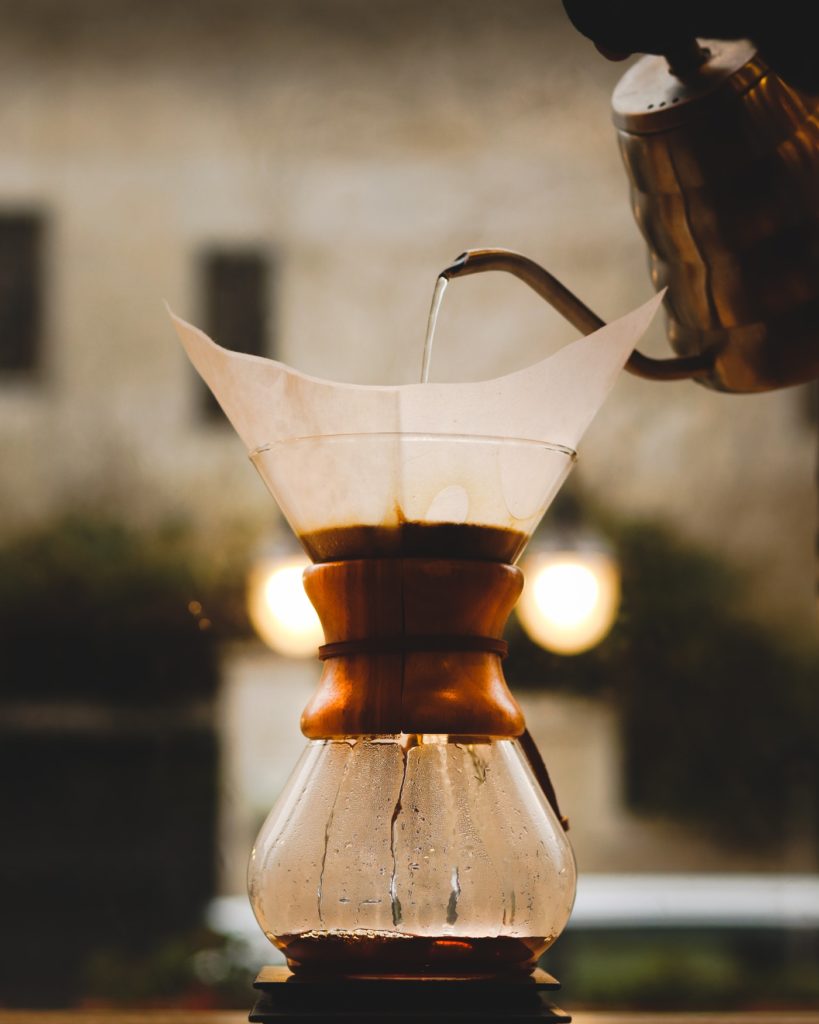
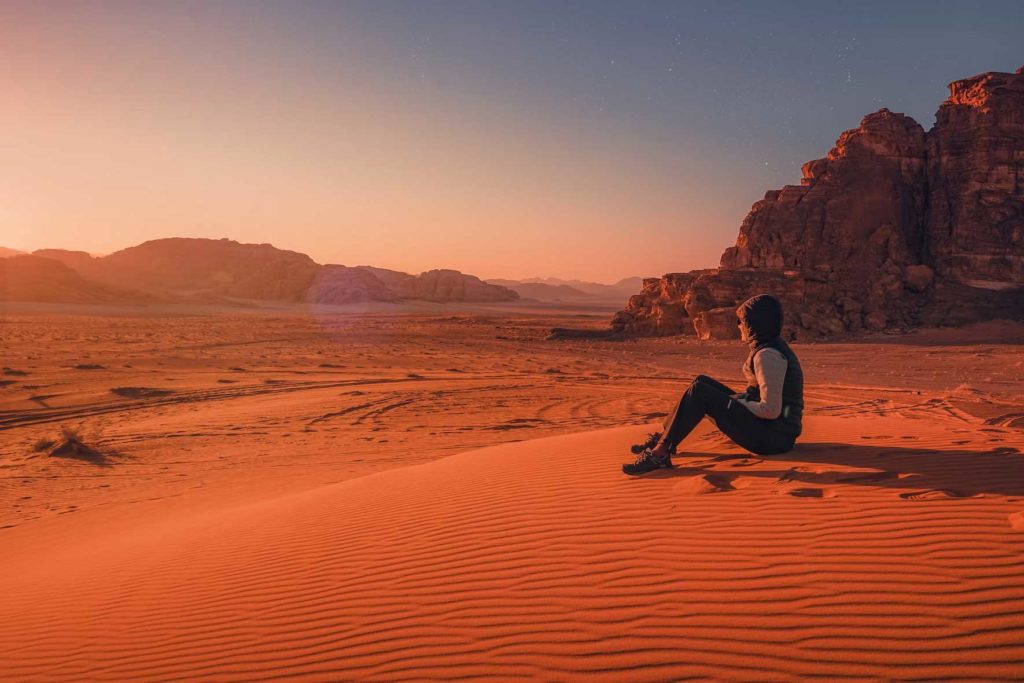
–
Check our other travel guides.